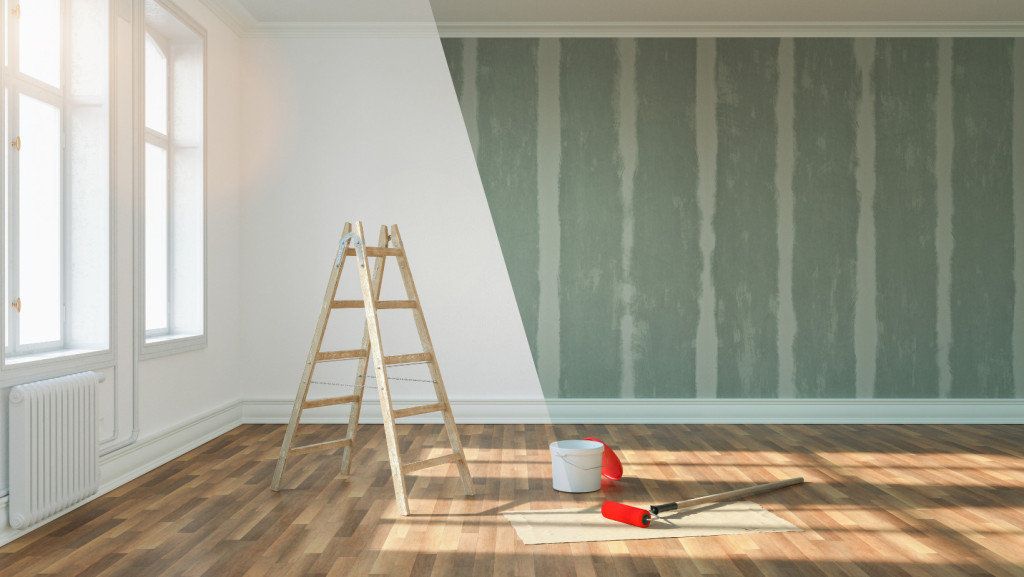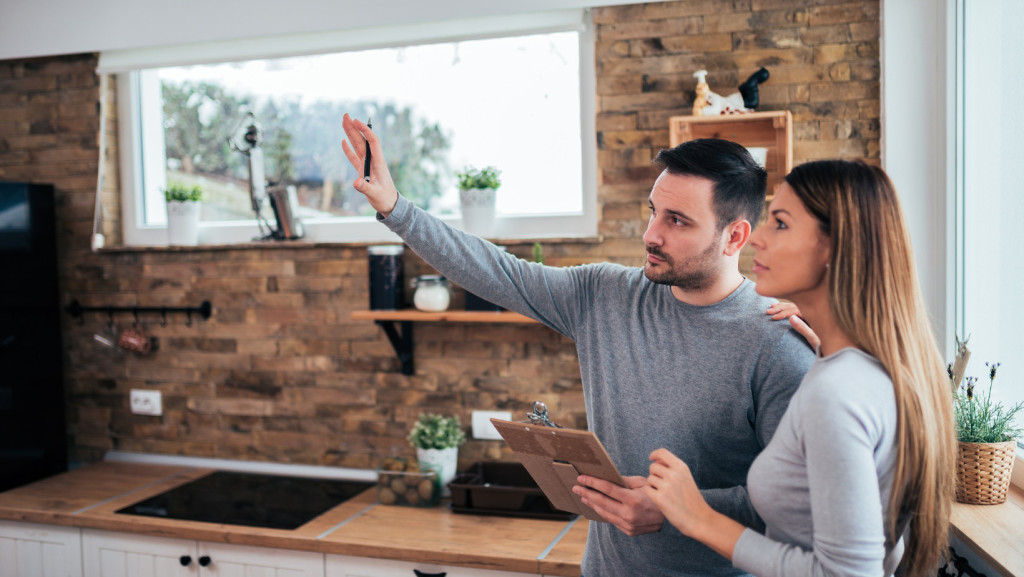Article Courtesy of Bigger Pockets
Flipping houses is on the rise. 114,706 single-family houses and condos were flipped in the first quarter of 2022. That number accounts for 9.6% of all U.S. housing transactions.
Flipping houses can be one of the most lucrative small businesses to start—and anyone can do it. All you need is a willingness to learn! However, it’ll come in handy if you have real estate investment experience or construction knowledge.
You can flip houses part-time for some additional revenue, or you can become a full-time flipper.
What is House Flipping?
House flipping is a form of real estate investing where you buy a property, improve it, and then quickly sell it for a profit.
The strategy behind it is to buy a home that’s distressed, undergoing foreclosure, or undervalued for other reasons. After purchasing the home, you make the repairs and renovations to boost its value and then sell it immediately. House flipping is also known as a “fix and flip.”
Why Should You Flip Houses?
There are tons of great reasons to become a house flipper. Here are some of our favorites:
It Can Be Lucrative
Flipping houses can be very profitable, and you don’t have to be a full-time flipper to enjoy full-time profits. If you flip two houses a year and make $30,000 in profits from each, you’ll enjoy $60,000 in additional revenue. If you flip a house every three months, you could easily break six figures—especially when using the tips and tricks found in this article.
You’ll Enjoy the Flexibility
Flipping houses provides you with many freedoms you can’t get with other jobs. You can be your own boss, or co-run a house flipping business with a partner. You can choose to work on your schedule and pace, and take vacations whenever you’d like. House flippers can also work from anywhere, and even remotely, under certain circumstances.
You Don’t Need Special Licenses, Certifications, or a Degree
Anyone can break into real estate investing. You don’t need to go to school or get a license to buy and refurbish a property.
However, you will benefit from having real estate investment or construction experience, or at least connections to people with these skills. We recommend working with an investor-friendly real estate agent, especially when you’re just starting out. They can help you determine if a property is worth buying, its potential, and what repairs and renovations they’d recommend. Also, they’ll be incredibly helpful during the buying/selling process.
You’ll Learn a Lot About Real Estate Investing
You’ll get a ton of investment property experience when flipping homes, including an intimate knowledge of the real estate market, construction, and design. This experience will be transferable to other forms of investing, including rental property investing, real estate notes, multifamily, and more.
But that’s not all!
You’ll also learn the basics of running your own business and everything associated with it.
Your Startup Costs are Minimal
House flipping is much cheaper than many other small business ventures. It doesn’t require you to have any equipment, inventory, or employees. You need capital for a down payment and money for repairs and renovations, but there are a number of ways to get access to that capital, even if you don’t have lots of cash in savings.
Start Flipping Houses Step By Step Guide

Step 1: Commit to the flip
Like marriage, the first step in your real estate adventure is commitment. It’s easy to get excited about house flipping or landlording—but can you actually commit to going the distance? House flipping isn’t a hobby. It’s a business that can dramatically affect your financial future, positively and negatively. Don’t go into this thing willy-nilly.
Decide you are going to do this. You’re 100% committed to learning everything you need to learn to get there. Then—and only then—should you move on to step two.
Steps 2–4: Educate yourself
Don’t dive into the flipping game without doing some background research first. Here’s what you need to know.
2. Educate yourself on flipping houses
Education is a lifelong pursuit—but spend some extra time learning before jumping into a house flip. Don’t pay $50,000 for some kind of guru training camp. But you should take your education seriously and buckle down to learn the basics.
Start with The Book on Flipping Houses written by J. Scott. If you’re planning on flipping houses and haven’t read this book through at least once carefully—and taken notes!—you’re not doing enough. If you’ve already read it, go back and read it again.
Next, start to teach your spouse (or kids, mom, dad, dog, cat, or hamster) what you’ve learned. Teaching is the best way to internalize knowledge truly. Don’t just review the surface details. Get deep, so you can truly understand how this stuff all works. You don’t need to know everything but get good at the basics.
One last word of caution: Don’t get caught in this cycle for too long. You’ll never know everything, so dive into the education for a short while, learn all you can, and then move on.
3. Learn the flipping math
Without the right math going into a flip, you’ll never get the right money coming out of it. Understanding math is the number one most important trait in a successful flip because math determines how much you should pay, how much work to put into the property, and how much you expect to get out.
Start with the BiggerPockets House Flipping Calculator. Play with the numbers, and you’ll find out how much you’ll really make on a hypothetical flip.
Do the numbers by hand to ensure you understand the math behind the calculators. If you’re struggling with the numbers, ask for help in the Deal Analysis forum here on BiggerPockets. There are thousands of investors there waiting to help.
Don’t move on until you understand the math.
4. Market research
Next, take a look at the market and decide where the best place to flip will be. In some areas, $300,000 for a home would be absurdly cheap. In other places, $300,000 would be absurdly expensive. Every market is different, so you need to have a good handle on the market you plan to flip in. Ask yourself these questions.
- How much are average homes selling for?
- How much are bank REOs selling for?
- How fast are properties selling?
- What areas seem to be selling the fastest?
- What property types, sizes, and layouts seem to be selling the fastest?
Do a thorough job of understanding your local market. Walk through as many open houses as you can, spend time on your computer or phone and go on as many virtual tours you can, and meet with local experts to discuss the state of the local market and economy.
Then, cycle back to the math and see if flipping makes sense in that area.

Steps 5–6: Find your partners
You can’t flip a house alone. Yes, ambitious investors can do the bulk of the work themselves—but you’ll still need a lender and a real estate agent.
5. Arrange your flip financing
At this point, you’re excited to get started. Don’t put the cart before the horse. First, ask yourself a very basic question: How are you going to pay for this flip?
There are a lot of different strategies you can use to finance your next house flip. Here are a few of the more common methods.
- All cash: If you have cash in your bank account, you can simply write the check. This is obviously the easiest solution, but impossible for most folks.
- Conventional financing: Some people utilize a normal bank loan to flip houses, but this can be difficult if the house is not in great shape, as most banks won’t lend on unfinished houses.
- Home equity loans: If you have a large amount of equity in your personal home, you may be able to tap into this equity in the form of a home equity loan or line of credit (often called a HELOC). Talk to your credit union or lender to pursue this strategy.
- Hard money loans: A hard money loan is a short-term loan funded by private investors.
- Private Money Lenders: Private money lenders are individuals or companies that provide loans specifically for real estate investments. These lenders can offer more flexibility in terms of loan requirements and can be a viable option for financing house flips.
- 401(k) Loans: If you have a self-directed 401(k) retirement account, you may be able to borrow funds from it to finance your house flip. This strategy allows you to leverage your retirement savings for real estate investments.
You have many different options, but you’ll need to pick one to move on. Finalize whatever source you plan on using before shopping for your investment property, so you can quickly jump on it. In today’s hot market, speed is key in getting a great deal.
6. Find a real estate agent
At this point, you understand what makes a good deal good and have financing lined up. You’re ready to rock. However, you don’t need to do it all yourself. You need to find one team member: a real estate agent. Why? Because they’re free.
Yep, your seller pays the agent. So why not use one?
Your agent can open doors, write up offers, find comparable sales so you know what properties are really worth, and so much more. Engaging the agent who listed the property is a newbie mistake. If you do, you’ll be dealing with the seller’s agent, who has a legal obligation to encourage you to pay the most possible. This is like having an attorney who represents both the plaintiff and defendant in the same case. Do you really want that person helping you? Nope. Find a buyer’s agent.
One caveat here: If you plan to use direct mail to find your first flip—aka sending letters to thousands of individuals, hoping a small percentage will turn into deals—you don’t want an agent. The same applies if you are looking to buy homes FSBO (for sale by owner). Real estate agents are perfect if you plan to buy homes from the multiple listing service (MLS), where most homes are listed.
Step 7–10: Find the best deal for you
Before you start seriously searching, it’s good to think critically about what makes a deal right for you. This requires both good analytical skills and some time spent considering what fits in your portfolio—or, if you’re just starting in real estate investing, what you want said portfolio to look like.
7. Define your prospective deal
First, funnel all the possible choices down to specifics. This is when your education and market research come in handy. You want to flip houses that people want to buy—so what kind of homes are they buying, and where? Think about things like:
- What is the most you’ll pay?
- What is the least you’ll pay?
- What is the minimum or maximum number of bedrooms?
Congratulations, that’s enough criteria to start filtering the properties on the market. Sometimes, however, a two-bedroom home could become a three-bedroom, or a one-bath house could become a two-bath, so keep your criteria broad.
Once you’ve made some decisions, let your agent know. They can set you up with automatic emails, which will alert you when suitable properties come on the market.
8. Analyze potential deals
This is an important step in the process, so don’t skip it. It’s time to start doing some deal analysis on real properties.
Investing is a numbers game. Every property has a price that makes it a great deal. Your job is to find that sweet spot.
Let’s say you run the numbers and decide that you could pay $150,000 for a particular house. But it’s listed at $275,000—you can skip that one. However, if it’s been listed at $190,000 for the past four months, maybe the sellers will go down to $150,000. If it’s at $160,000, you probably have an easy deal to put together. (But there may be reasons why the deal’s so easy!)
If you haven’t yet, check out BiggerPockets’ House Flipping Calculator, which will help you quickly plug in numbers to see the potential of any deal.
Before submitting an offer, you need to be extremely confident in your ability to judge a property’s potential. Head over to Zillow, Redfin, or Realtor.com and start pulling numbers for potential properties that look like good options. Do your best to make good assumptions about the rehab costs and other potential expenses. (It’s more important to understand the process of analyzing these deals than to know the exact values right now.) This way, you’ll know what to do when you get a real potential deal across your desk.
Additionally, get out there and start physically looking at homes. Walk through as many as you can. Ask a lot of questions and learn as much as you can. This will not only help you find the best properties, but it will also motivate you, too.
Ask for help in the BiggerPockets Deal Analysis Forum if you need some extra assistance.
9. Start driving for dollars
In addition to looking on the MLS, it’s not a bad idea either to get in your car and start driving around, hunting for potential deals.
In the real estate investing industry, we often call this “driving for dollars.” Look for properties that are vacant or need some serious cosmetic help. If you can find the owners through public records, you’ll often find them very willing to sell for a great deal.
10. Find the perfect house
After walking through and analyzing dozens of properties and talking with your agent about your needs, eventually you’ll find the perfect flip. You may find one right away, or it may take months. Don’t worry about how long it takes—focus on finding the best deal possible. You don’t want anxiety to impede your financial future. Be patient and stick to your criteria.
Don’t let emotion take over the deal.
Excitement is inevitable. After all, you’ve put a lot of work into this project and you really want to see everything come together. However, this is no time to toss out everything you’ve learned. Stay calm, stick to your numbers, and get ready for the real excitement to start.






